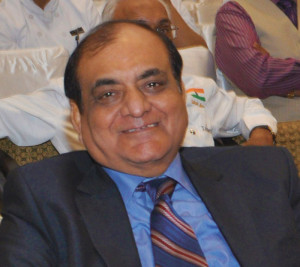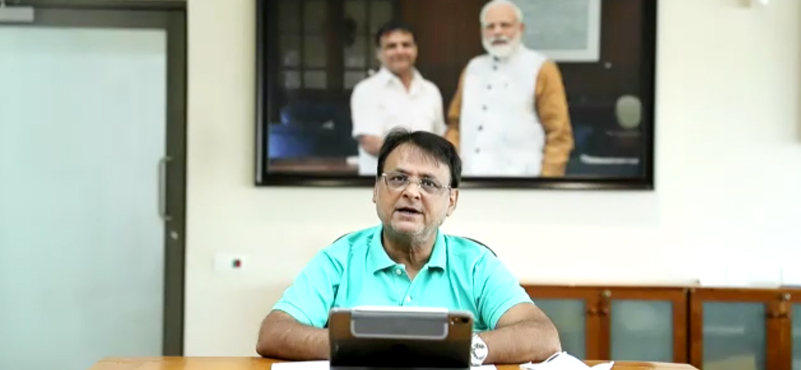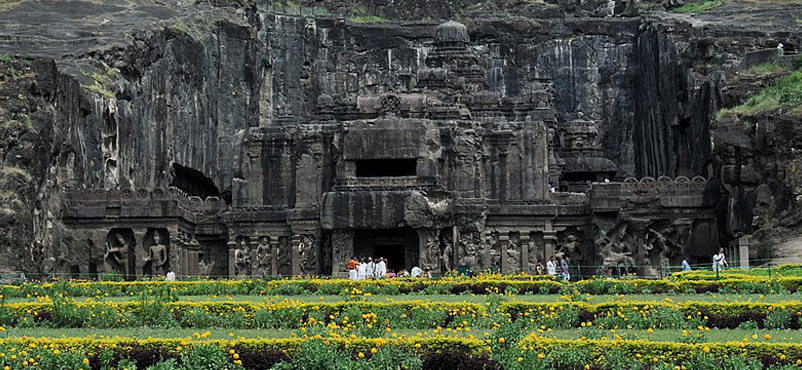Uttar Pradesh moved up to second position in the Domestic Tourist Visitors’ (DTVs) ranking of the Top Ten States with the state attracting 226.5 million DTVs in 2013, moving up from third position in 2012 with 168.4 mn.
Varanasi, Uttar Pradesh’s second-most visited tourist city, is synonymous with its historic temples and age-old spirituality. Attracting domestic and foreign tourists, the total inflow of tourists to the city in 2013 was over 5.2 mn, with DTV inflow being 95% of the total.

Prime Minister Narendra Modi’s vision to clean the Ganga, create a Varanasi riverfront and convert his political constituency into a ‘smart heritage city’ is in line with his plans of building 100 ‘smart cities’ in India. It is a good initiative but there needs to be proper planning if the oldest ‘living city’ in the world is to be considered a world heritage city.
The old city, the ghats, temples and monuments are deteriorating due to poor maintenance. There is lack of cleanliness as people thoughtlessly throw garbage onto the roads or into the much-polluted Ganga. Half-burnt dead bodies are disposed of in the river adding to the unhygienic conditions. Stray cattle and dogs move freely on the roads and lanes dirtying them in the process. Pollution, poor traffic management, a population far exceeding the urban carrying capacity have led to unplanned development in Varanasi for decades. A systematic approach is needed for the city’s development.
Tourism is an economic activity which generates income as well as employment. The power of Tourism can be understood better from the following statistics:
| Word | India | Varanasi | |
| No. of Tourists International | 1.087bn | 6.97mn | 0.26 mn |
| Domestic | 1145mn | 5.2 mn | |
| Contribution to GDP | 9.5% | 2% | |
| In Figures | US$7trn | Rs. 2,178bn | |
| Foreign Exchange Earnings | US$18.5bn | ||
| Employment | 266mn | 35mn |
(Source: WTTC & Ministry of Tourism 2013 statistics)
The power of the deity along with the services like cleanliness, high levels of hygiene, efficient management by local authorities can attract a larger number of tourists and devotees and higher income as the following chart shows:
| Name of Pilgrimage | Donation per annum (Rs. in cr) | Number of Visitors (in mn) |
| Tirupati | 650 | 50 |
| Shirdi | 350 | 36 |
| Vaishno Devi | 500 | 10 |
| Kashi Vishwanath | 30 |
A comparison of Visitor Experiences of four major religious places conducted by us is as follows:
| Pilgrimage Place | Tirupati | Vaishnodevi | Shirdi | Varanasi |
| Tourist Arrivals(2013) | 50 mn | 10 mn | 36 mn | 5.2 mn |
| Hotel Accommodation | Very good | Good | Very good | Average |
| Welcome | Excellent | Very good | Very good | Good |
| Transport – Bus | Excellent | Very good | Excellent | Average |
| Taxi | Excellent | Very good | Very good | Good |
| Railway | Good | Good | Good | Good |
| Airport | Yes | Yes Helipad | Yes | Yes |
| Touts/Beggars | No | No | Yes | Yes |
| Cleanliness | Excellent | Good | Good | Poor |
In order to make Varanasi a ‘smart city’ so as to score an ‘excellent’ rating on the visitor experience, the local authorities need to have a specific vision, well-stated objectives and a clear cut strategy for all the departments to act upon the plans in a time-bound manner. The activities have to be ongoing and done in a sustainable manner so that the city is maintained all the time as clean, hygienic and orderly.
I suggest the Vision Statement be as follows:
- To Develop Varanasi as World class Pilgrimage, Heritage ‘Smart’ City
- To Create Best in Class Visitor Experience
- To Promote Religious, Cultural, Social Values in Sustainable manner
- To Provide Comfortable Accommodation for Visitors
- To Ensure Visitor Safety & Security
The Union Ministry of Tourism, Uttar Pradesh Tourism Department, Varanasi Development Authority and all concerned stakeholders need to work out plans to recreate a world class city infrastructure reflecting the Hindu religious and cultural ethos of Varanasi.
Other objectives of developing the city is to provide better infrastructural facilities, increased employment opportunities, and make the people more tourist-friendly besides attracting tourists through better Visitor Experience, The objectives include:
- Create Mass Awareness & Strengthen Mental Infrastructure
- Tourism transforms economies of regions, countries
- Key to more visitors hinges on attitude of local people
- Promotes development, change in living standards
- Plays direct, indirect role in economy & job generation
- More friendly a population, more are tourist arrivals
- No sooner do masses understand the importance of Tourism, results start flowing
A tourism profile of a monthwise study showed that the peak season for tourist inflow was between October-March when important fairs and festivals are held. International tourists gave priority to “education & research” and most domestic tourists gave “pilgrimage & spiritual travel” as the main reason for visiting Varanasi.
Annual growth of the tourist inflow has been 6.3% per year and average stay two days/one night. The total number of beds is 13,340 which is far short of the tourist requirements of about 28,000 beds per day. There are 28 hotels with 1,425 rooms and 107 paying guest hotels accounting for 445 rooms, according to UP Department of Tourism figures. Priority needs to be given to deal with the acute shortage of standard tourist accommodation.
Regarding existing products, there are multiple layers of religion, culture, art forms, nature, profiles and individualities. Sacred and a holy place to Hindus, Buddhists, Jains and Muslims, it is also home to numerous religious monuments and famous as a centre of music, arts, crafts, education and learning.
The culture of Varanasi is deeply related with the Ganga River for its religious importance and is known mainly for its ghats, being the religious bathing place for pilgrims. The main places visited by tourists in terms of their requirements are:
- Ganges river – Varun & Assi rivers as tributaries
- Temples – 23,000 – Most visited are Kashi Vishwanath, Sankat Mochan & Durga temples
- Monuments – Ramnagar Fort, Bharat Kala Bhavan, Aurangzeb’s mosque
- Centre of Music – home to famous musicians such as shehnai maestro Bismillah Khan, Pt. Ravi Shankar, Smt. Girija Devi
- Arts & Handicrafts – famous for silks, brocades, carpets and beads
- Educational Institutions – BHU, Sampurnanand Sanskrit Vishwavidyalaya, Central Institute of Tibetan Studies
- Centre – for Yoga & Meditation
In terms of development of Varanasi as a world class destination, the authorities need to:
- Establish an Authority for Vision Implementation
- Work out Plan in Consultation with all Stakeholders & Experts
- Prepare Financial Budget
- Develop an Action Plan and Prioritize Activities
- Earmark Areas of Responsibility for Departments & Individuals
- Implement Plan and Monitor on Regular Basis
The authorities, to improve the tourism product, need to ensure restoration, conservation and upgradation through:
- Implementation of Swachh Bharat campaign
- Round-the-clock cleanliness
- Provide dust bins, cover open drains
- Area to be kept free of animals, touts and beggars
- Reception centre for pundits and guide services
- Separate bathing ghats for men and women
- Ponds for offering puja materials, etc
- Stage for religious musical performances
- Earmark area for Yoga & meditation at ghats
- Boat rides on Ganges
- Identification of safe & hygienic food outlets for local specialities such as Banarsipaan (betel leaf), licensed bhang, langda mango during the mango season and more.
- Parking for cars, buses, rickshaws, etc.
- Police, CCTV cameras for safety and security
- Update cremation facilities
Infrastructurewise development of Varanasi as an outstanding pilgrimage and heritage ‘smart city will require:
I. Non-polluting transport and world class terminals. Presently the city is accessible through air, land and water based modes. The international airport is 22 km from the city. About 3,000-4,000 passengers land here daily.
The two railway stations, Varanasi Cantonment station and Kashi Railway Station receive about 15,000-17,000 people every day.
The two bus terminals are at Cantt. and Kashi depot but the Cantt, terminal handles buses for both depots. It has a capacity for 440 buses and on an average 12,000-13,000 passengers arrive per day.
II. E-rickshaws, Trams, Metro to reduce pollution. There are about 28,000 auto-rickshaws operating in the city while only 2,600 are permitted. This creates congestion on the roads and is a major cause of pollution
III. Better traffic management, construction of BRT corridors for city transport, road signages, illustrated guide maps to help visitors and effective lighting to ensure security.
Traffic movement in the city is mostly on 2-wheelers followed by auto-rickshaw, cycles, pedestrians, 4-wheelers and cycle rickshaws. The poor state of overall mobility and congestion is attributed to poor traffic management, lack of control by authorities, heavy encroachments by hawkers and limited width of roads.
IV. Clean water supply, effective drainage systems and garbage-free destinations. Introduced in 1892, the water supply system was designed for a population of 0.2 mn whereas in 2013 Varanasi’s population has crossed 3.6 mn. Users receive only half of the total water supplied by the Jal Nigam as the distribution system, spread over 590 km, is more than 100 years old. The Ganga takes care of nearly half the water supplied and the remainder comes from tubewells and hand pumps.
The capacity of the sewage treatment plants is four times less than the sewage generated. Most of the sewage is disposed of in the Ganga without treatment as only 30% of the total area is provided with underground sewer networks. Normally people throw their garbage on the roads.
Giving the opportunity to visitors to explore beyond the beaten track, going on excursions, etc. would help in additional nights’ stay in Varanasi, widen their range of adventure as well as provide a boost to the local population and the economy. For this it is vital to identify and develop new products/circuits such as:
- Help popularize regions in vicinity of Varanasi. The circuits could include Chunar Fort (40 km), the wildlife sanctuaries at Chandraprabha (70 km) & Kaimoor (130 km).
- Kushinagar (200 km), location of Buddhist, Japanese, and Chinese temples
- Sarnath with Kushinagar, Kapilvastu, Sravasti and Kaushambi, connected by good quality roads & helicopter services
- Organize visits to Bhadoi for carpets, Mubarakpur for sarees and brocade weaving, Nizamabad for black pottery and Hariharpur for music-lovers
- Promote internationally festivals of Maha Shivaratri, Ramleela, Hanuman Jayanti, Buddha Purnima, Ganga Mahotsav, Dhrupad Mela, etc.
Creation of a Tourism Village/Park would attract more foreigners and Indians than the present number of visitors as it would provide safe and sustainable tourism. Advantages would include availability of accommodation ranging from the deluxe to mid-market segment, integrated facilities at one place, besides providing an ideal visitor experience through hosting of cultural events and festivals, craft centres, food bazaars, live street entertainment and sporting activities.
A Tourism Village/Park is defined as a tract of land with defined boundaries, suitable for developing into an integrated Tourism complex, with prescribed carrying capacities, having facilities and activities, maintaining the environment and retaining the culture of the destination.
Tourism Village/Park should consist of the following components/ Facilities:
- Hotels – 5, 4, 3-star categories
- Convention Centres & Amphitheatres
- Food Courts & Restaurants
- Shopping Centres & Malls
- Handicraft & Weaving Centres as at Dilli Haat
- Amusement Parks
- Yoga & Meditation Centres
- State Tourism Offices & Information Centres
- Airline, Railway & Road Transport agencies
- Travel Agents & Tour Operators offices
- Tourist Police offices
- Hospital & Medical Services
Ideally, the proposed Tourism Park could be created through any of the following vehicles:
- State/Central Governments on PPP model
- Acquiring approx. 20 acres of land
- Leasing land to investors
- Investors to build hotels & other facilities
Tourism Village/Park – Advantages
Benefit To State
- Higher Inflow of Investments
- Regular Income through Land Lease
- Increased Employment Opportunities
- Easier to Regulate the Environment
- Focused Tourism Development
Benefit To Investor
- Lower Capital Investment as Land will be on Lease
- Single-window Clearance
- Environmental Controls
- Fiscal Benefits, Tax Holiday
- Availability of Integrated Facilities at One Place
- Greater Choice through a Basket of Services
Benefits To Tourists
- Availability of Integrated Facilities at One Place
- Greater Choice to Tourists Through a Basket of Services
- Safety & Security: Area Free from Touts/Beggars
- Competitive Price – Value for Money
- Clean & Regulated Environment
Brand slogans are considered to be a part of a destination’s identity for creation of a long term value as well as the marketing of promises intended to raise the potential visitors’ expectations. To brand Varanasi one of the following slogans could be considered:
- Varanasi – City of Spiritual Light
- Varanasi – Religious City of India
- World’s Oldest Living City – Varanasi
- Varanasi – The Eternal City
For bringing Varanasi centrestage as an important Tourism destination, the Centre and State Governments need to focus on the publicity and promotion of this temple-town. To effectively market Varanasi as being more than a part of the country’s religious circuit, I suggest the following:
- Prepare an exhaustive plan for publicity and promotion
- Allocate commensurate funds / budget
- Promote extensively in social media
- Develop apps for Varanasi which showcases all important places and cultural activities
- Create interactive website to disseminate information of Tourism products and services, hotels, transport, cultural and religious events
- Website with linkages with all popular search engines, Mr. Modi’s website and with the Ministry of Tourism’s Incredible India site
- Promote through electronic and print media internationally and domestically
- Participate in Tourism and Industrial Trade Fairs in India and worldwide
- Invite travel agents, tour operators, travel writers, media, bloggers and authors as also organize Fam tours.
By Anil Bhandari Chairman, AB Smart Concepts




































